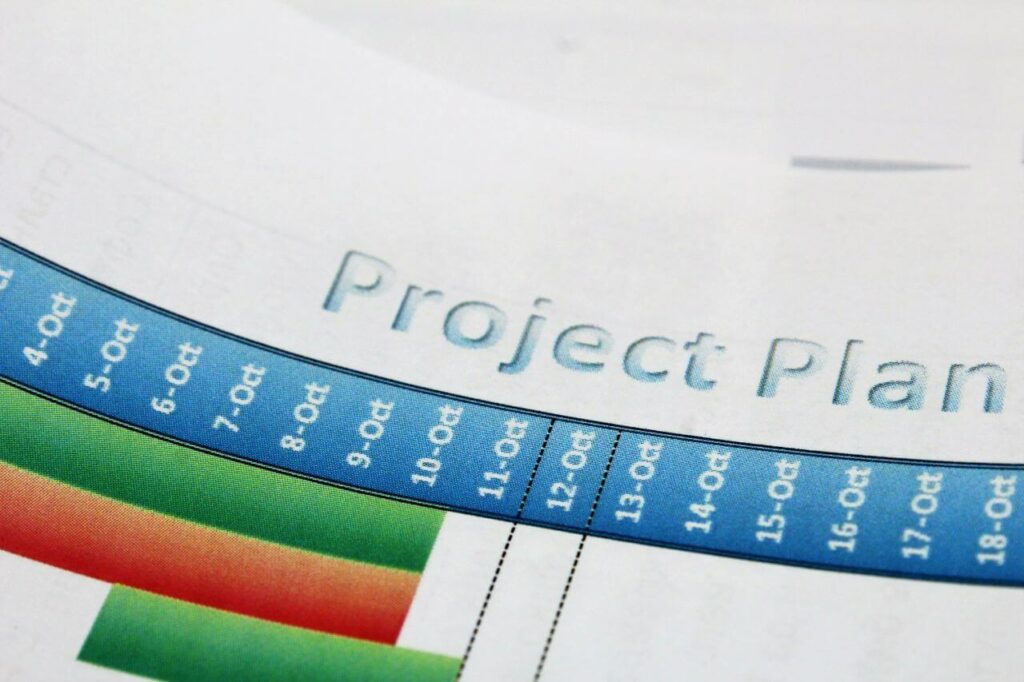While the Agile methodology which is the rave of the moment prioritizes working software over comprehensive documentation, waterfall or traditional project management places a premium on project documentation.
Every project irrespective of size needs a roadmap that details what the project is about, and a guide to get the team through the project life cycle and achieve the desired result.
The project charter and project plan are two key documents that serve as roadmaps for your project from the initiation to the closing phase.
In this blog post, we’ll explore the differences between project charter vs project plan, why they are important, and how they complement each other in project management.
What is a Project Charter?
A project charter is a key project document that gives a high-level overview of the project scope, deliverables, stakeholders, and success criteria.
This document is developed in the project initiation phase and this process according to the Project Management Book of Knowledge (PMBOK) is the first in the project integration knowledge area.
The project charter selects a project manager, bestows authority to use resources, and secures the commitment of management.
It also identifies high-level constraints, assumptions, and risks.

How to Create a Project Charter
Creating a project charter is an excellent way to get your project off to a good start as it defines the project’s goals, objectives, and scope, as well as provides a framework for decision-making and communication.
Here’s how to make a project charter:
1. Determine the Project Goal
Begin by identifying the project’s purpose and its outcome. This will assist you in determining what steps must be taken to achieve it.
2. Define the Project Scope
Determine the project’s scope by answering questions such as: What will be included in the project? What will be excluded? Who will be involved?
3. Assign Responsibilities and Roles
Assign team members, including a project manager, roles and responsibilities. Ascertain that everyone is aware of their roles and the expectations for their performance.
4. Create a Timeline and Milestones.
Set a completion date for the project and identify key milestones. This will help everyone stay on track and complete the project on time.
5. Create Project Metrics
Determine the key metrics that will be used to assess the project’s success. This will assist the team in tracking progress and identifying areas for improvement.
6. Define Project Risks
Identify any project-related risks and explain how they will be managed. This will assist the team in anticipating and addressing potential issues.
7. Finalize the Project Charter.
Once all of the details are completed, create a written project charter and distribute it to the team to ensure that everyone is on the same page and that the project is properly managed.
Project Charter Sample
Here’s a sample of a project charter to give you a more visual understanding:
- Project title and description
- Project manager and authority level
- Business case
- Preassigned resources
- Key stakeholders
- Stakeholder requirements
- High-level product requirements
- Key deliverables and milestones
- High-level assumptions
- High-level constraints
- Measurable project objectives
- Project approval requirements
- Risks
- Exit criteria
- Project sponsor sign-off

What is a Project Plan?
A project plan is a document that outlines how a project will be carried out from beginning to end. It provides an overview of the project’s goals, objectives, timeline, and resources needed.
It also outlines the tasks that must be completed, each stakeholder’s roles and responsibilities, and any potential risks or challenges that may arise.
The project plan is critical for ensuring that the project runs smoothly and successfully as it serves as a project roadmap and a framework for tracking progress.
The project plan helps to ensure that everyone involved in the project is on the same page and working towards the same goals by providing a clear plan of action.
While most people use the project plan and project management plan interchangeably, the project management plan is more focused on planning how to manage the project activities.
What is a Project Management Plan?
A project management plan is a document that outlines the activities and processes required to manage a project. It includes the scope, timeline, budget, resources, and deliverables.
It also describes the team members’ roles and responsibilities, as well as the risk management and communication plans.

How to Create a Project Plan
Developing a project plan is an important step in project management because it ensures that the project is completed on time, within budget, and to the required quality standards.
The following are the steps to creating a project plan:
1. Define the Project Scope and Objectives
The first step in developing a project plan is to define the scope and objectives of the project.
This includes determining what the project’s goals are, what work needs to be done, and what resources will be needed.
2. Break the Project into Tasks
Once the project scope and objectives have been defined, the next step is to decompose the project into smaller, more manageable tasks.
This will allow you to create a more effective timeline and allocate resources.
3. Estimate Task Duration and Resource Requirements
Once the project has been broken down into smaller tasks, you must estimate the duration of each task as well as the resources needed to complete it.
This will assist you in developing a more accurate timeline and budget.
4. Create a Project Schedule
Using the estimated task durations, create a project schedule outlining when each task will begin and end.
This will assist you in ensuring that the project is completed on time and that resources are effectively allocated.
5. Allocate Resources
Allocate resources to each task based on the resource requirements identified for each task.
This will help to ensure that the resources are available when they are needed.
6. Create a Budget
Once you’ve estimated the resource requirements and created a project schedule, you can create a budget outlining the project’s costs.
This will assist you in ensuring that the project is completed on time and within budget.
7. Define Project Roles and Responsibilities
Finally, define the roles and responsibilities of each project team member.
This will help ensure that everyone understands what is expected of them and that the project is completed as quickly as possible.

Project Charter vs Project Plan
Now we take a look at the contrast between these documents to have a deeper understanding of what they represent in the project management life cycle.
1. Time of Creation
Both of these documents are created at different timelines of the project life cycle. The project is created during project initiation which is basically before the project has officially started.
It is the formal approval of the project charter that officially starts the project before planning can begin. The project plan on the other hand is created during the project planning phase.
2. Who Creates the Document
Another difference lies in the party responsible for the creation of these project documents. Typically, the project charter is created by the project sponsor.
While this role may be delegated, it remains the sponsor’s responsibility. The project plan is exclusively the responsibility of the project manager.
3. Purpose and Scope
The project charter is a high-level document that outlines the purpose, goals, and stakeholders of the project.
It focuses on establishing a shared understanding of the project’s goals and aligning stakeholders to achieve them.
In comparison, the project plan is a more detailed document that outlines the specific activities, timelines, and resources needed to complete the project.
4. Level of Detail
The project charter gives a high-level overview of the project, whereas the project plan goes into greater detail about the activities, timelines, and resources.
The project charter serves as a reference point throughout the project lifecycle, whereas the project plan guides day-to-day project management.
5. Audience
Typically, the project charter is written for an external audience, such as project sponsors, senior management, or other stakeholders.
It’s often a public-facing document that aids in project buy-in and support.
In contrast, the project plan is typically intended for internal use by the project team. It provides the detailed information required for the project team to effectively execute and monitor the project.
6. Flexibility
In general, the project charter is less adaptable than the project plan. It describes the project’s high-level objectives and scope, which are typically fixed and can only be changed with the approval of project sponsors or senior management.
The project plan, on the other hand, is more adaptable and can be revised and updated throughout the duration of the project.
How do the Project Charter and Project Plan Work Together?
While the project charter and project plan serve different roles, they are both necessary documents that must be used in tandem to ensure project success.
The project charter contains high-level information that guides the development of the project plan, whereas the project plan contains detailed information required to execute and monitor the project.
The project charter and project plan are linked, and changes to one can have an impact on the other. If the project’s scope changes, for example, the project charter may need to be updated, and the project plan may need to be revised to accommodate the new scope.
It’s critical to keep both documents up to date throughout the project lifecycle in order to keep the project on track.
Conclusion
With your understanding of the roles of these documents, their differences, and how they work together towards achieving project objectives, you can ensure that your projects are completed on time, within budget, and to the required quality standards.
It’s essential to keep both documents up-to-date throughout the project lifecycle, as changes to one document can impact the other.
FAQs
Is Project Plan part of Project Charter?
No, a project plan is not part of a project charter.
A project charter is a document that formally authorizes a project and defines the project’s objectives, while a project plan is a document that outlines the tasks, resources, and timeline for completing a project.
Does the Project Charter come before the Project Plan?
Yes, the project charter typically comes before the project plan.
The project charter serves as a foundation for the project plan, providing high-level information such as the project’s goals, stakeholders, and scope, while the project plan provides more specific details on activities, timelines, and resources.





